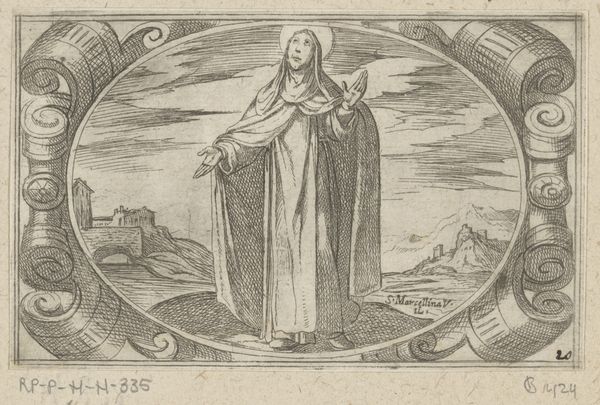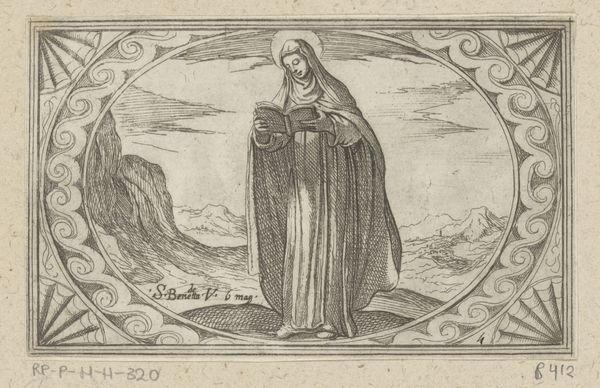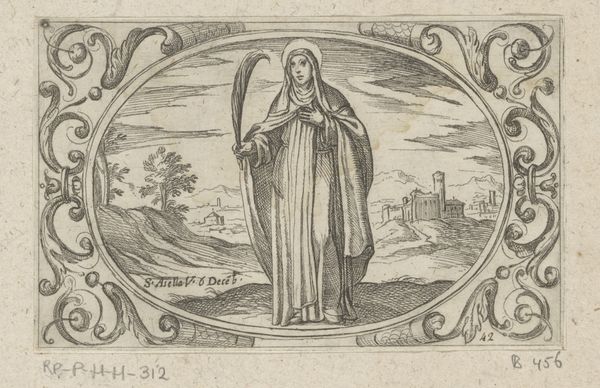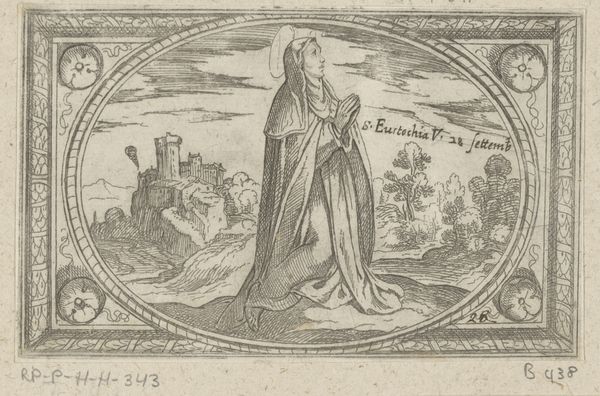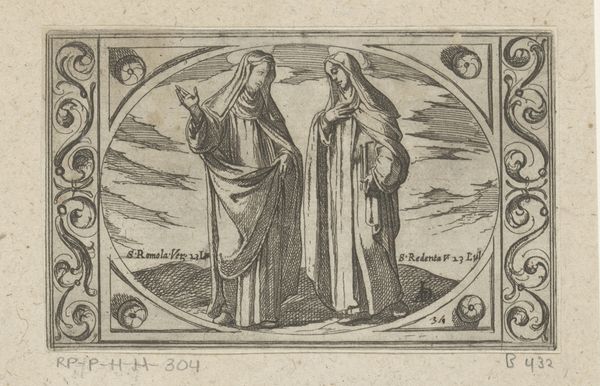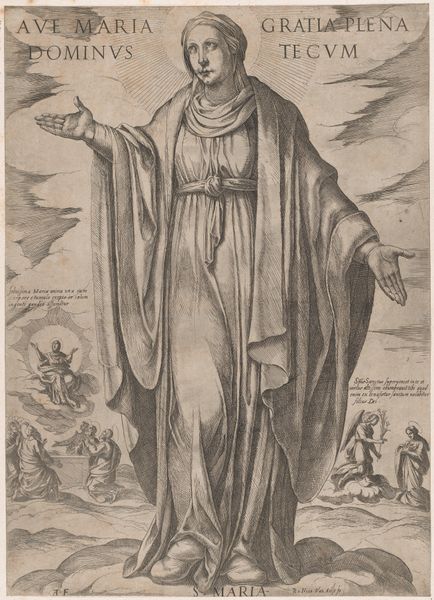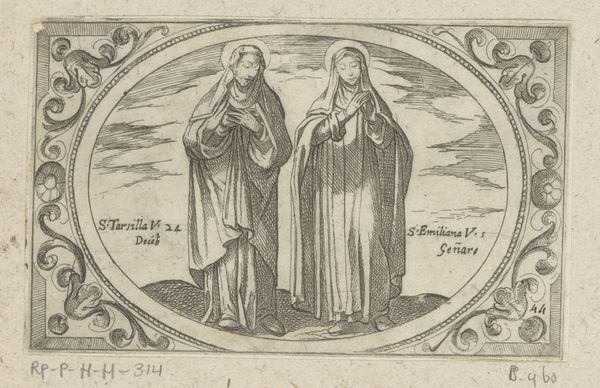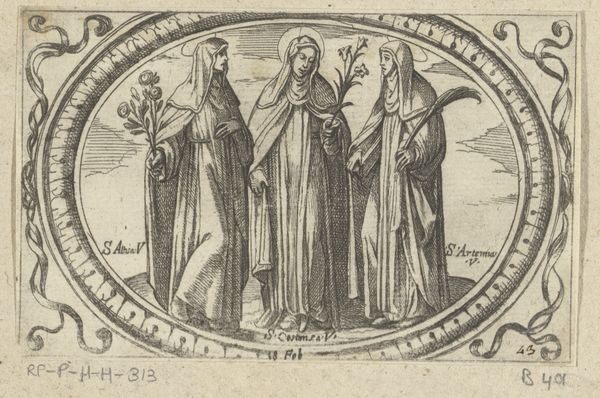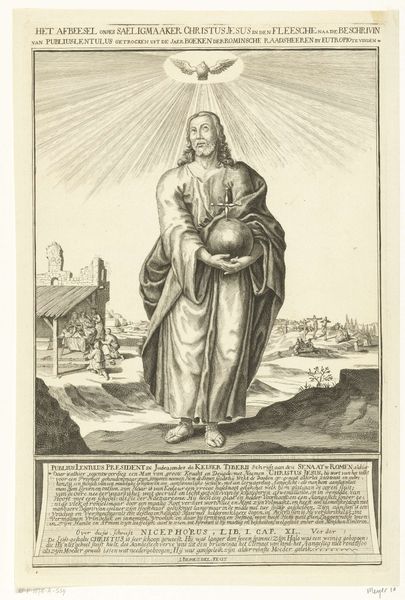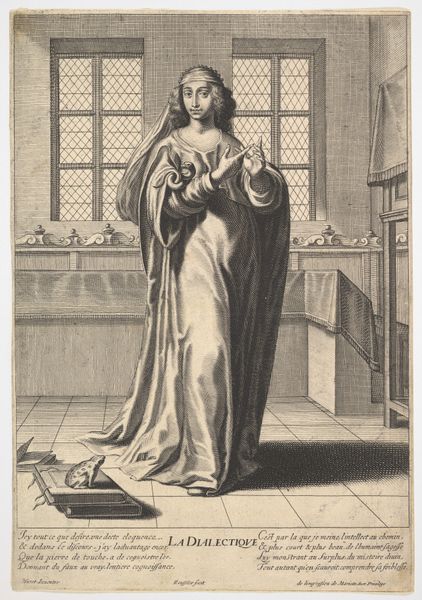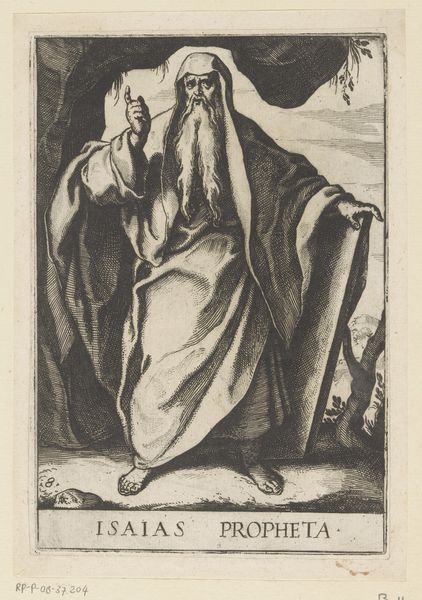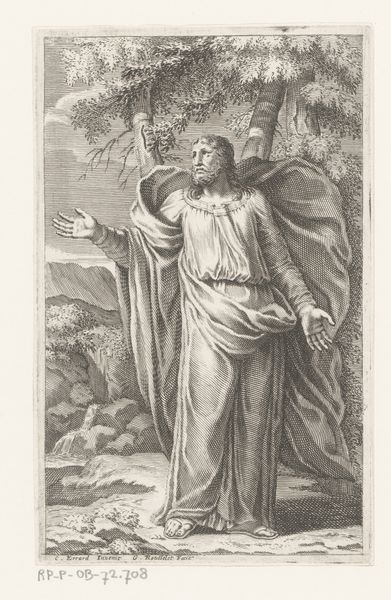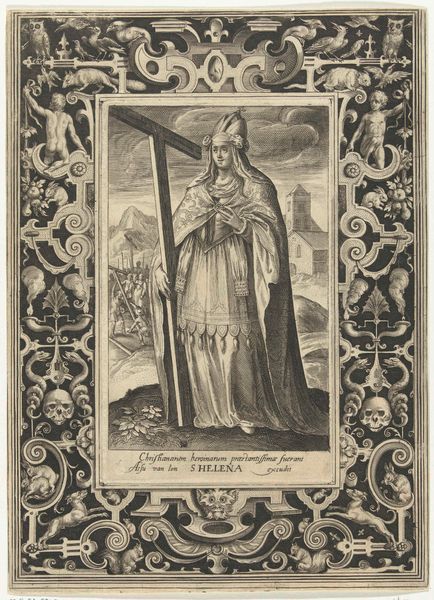
print, engraving
#
baroque
# print
#
old engraving style
#
figuration
#
line
#
engraving
Dimensions: height 73 mm, width 114 mm
Copyright: Rijks Museum: Open Domain
Antonio Tempesta created this engraving of H. Eustolia, sometime between the late 16th and early 17th century. It presents us with an idealised image of female piety, but how might its meaning be shaped by the cultural context in which it was produced? Tempesta was working in Italy at a time when the Catholic Church was seeking to renew its spiritual authority in the face of the Protestant Reformation. The visual arts played a key role in this process. Engravings such as this were widely circulated, and played an important part in shaping popular perceptions of Catholic saints and their virtues. The figure of Eustolia here, with her serene expression, simple habit and cruciform staff, would have been instantly recognisable as an emblem of faith, obedience, and devotion. Historical research allows us to understand how artistic images participate in larger networks of religious and political power. By examining the social and institutional contexts in which art is made, we can gain a richer sense of its historical significance.
Comments
No comments
Be the first to comment and join the conversation on the ultimate creative platform.
